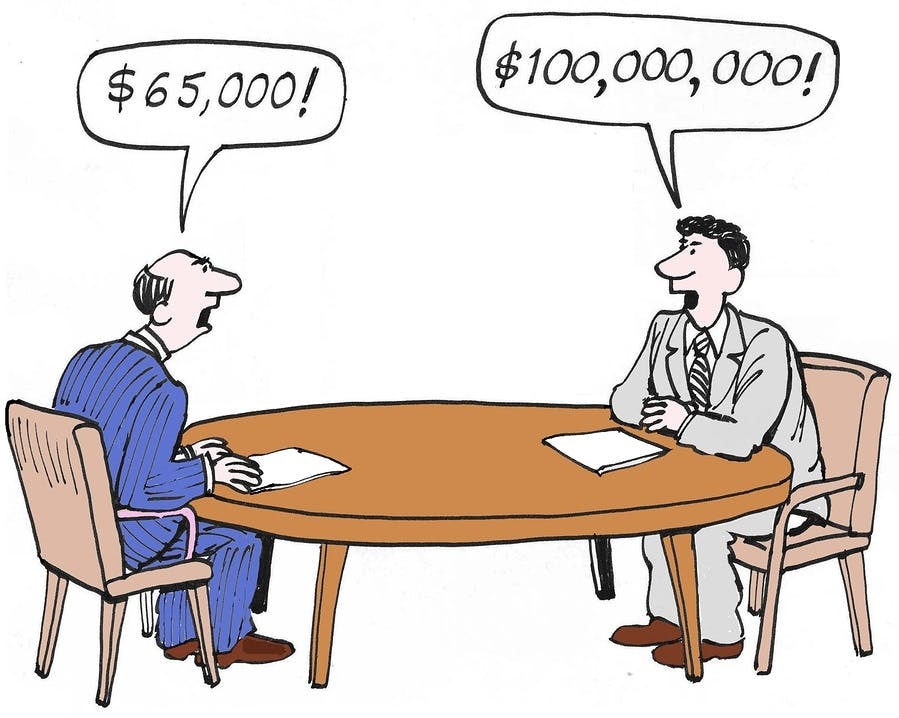Editor’s Note: It’s an annual tradition for TLNT to count down the most popular posts of the previous 12 months. We’re reposting each of the top 30 articles through January 2nd. This is No. 12 of the 800 articles posted in 2018. You can find the complete list here.
∼∼∼∼
In today’s incredibly tight labor market, it’s harder than ever to attract top notch talent. The majority of candidates are interviewing with (and receiving offers) from multiple companies. Counter-offers are more common, time to hire is increasing, and offer acceptance rates are trending down. In light of all this, recruiting teams that are thriving are upping their game to ensure they are providing the best candidate experience possible.
One of the most impactful things you can do to improve the candidate experience is to change the way you talk about pay and your approach to making offers. The conversations you have with candidates about pay and the offer you lead with are key drivers in their ultimate decision.
How are you talking about comp with candidates today?
Most recruiters are trained to follow a standard approach, roughly: “What are you currently making? This is what we’ll pay for this role, is this something you would accept?” Then, when you are ready to make an offer, you come in a bit low. You are anticipating that they will ask for a bit more, then you look like the hero when you “negotiate” for an extra $5,000.
What’s wrong with this approach?
First, you only find out what someone is willing to accept, not what someone is excited to accept. It’s common for new hires and employers to be misaligned on future compensation expectations. Let’s say you come up 10% during your negotiations. What are the implications? Will your new hire be eligible for a raise during your next review cycle? Your new hires should feel good about their compensation when they start, but they should also feel good about their compensation trajectory, as that will be a key driver of their engagement in the future.
Second, it’s easy to create pay inequities by punishing those who are most excited to work for your company. Here is a common example: You have two candidates, Stephanie and Brad. They bring nearly identical experience, and you are offering both Account Executive roles. Stephanie is REALLY excited about your company and she accepts your first offer. Brad pushes back on your initial offer, so you decide to increase Brad’s offer by 10%. Everyone is happy, for now…
Fast forward three months, Stephanie and Brad are now comfortable enough with each other to discuss compensation. Stephanie finds out that Brad is paid 10% higher, despite their similar background. How do you think Stephanie feels now?
- Explain your compensation strategy
- Lead with your best offer
Make this an effective strategy
To make this an effective strategy, you need to do some internal work and lay the groundwork throughout your recruiting process to build up the trust with candidates.
First and foremost, you need to develop a formal compensation strategy informed by market data. Data will inform you whether you’re paying in line with the market for your positions. If you’re not paying in line with the market, you can easily identify your next move — whether it’s to target a profile with less experience or increase your budget for a role to enable you to hire the right people.
Next, communicate your strategy to your candidates. Why do you target the 50th percentile? What data are you using? How did you set up your labor market? How do you handle review cycles? This additional context gets to the “why” of your compensation, which is often as important as the “what” of your compensation.
Once we have decided to move forward with an offer we do something crazy — we start with our best offer! We want the experience to feel more like a marriage proposal, and less like they are purchasing a car. If you can do this effectively, you can knock down the wall that people put up. In fact, I’ve seen this happen repeatedly in my time at PayScale. Because of this authentic offer approach, our offer acceptance rate is higher than many companies in our competitive set.
I believe that this approach works because it is the most candidate-centric approach. Rather than saying to a candidate “Are you willing to work for this amount?” you’re learning about their needs, wants and motivations and then making an effort to get them the best deal. By doing so, you will build trust and goodwill with candidates, increase your offer acceptance rate and improve your own reputation. If every talent acquisition professional at your organization does the same, over time, you will see your employer brand improve and better candidates applying to your positions.

